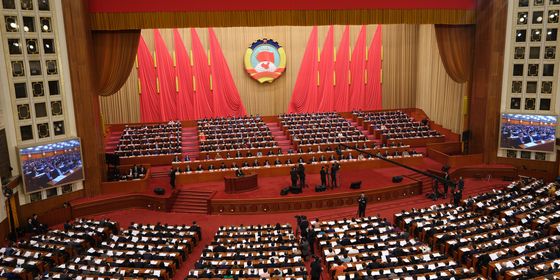How have divorce and unmarried cohabitation been addressed in China?
Around 10,000 couples get divorced every day in China—but untying the knot may be getting tougher by the year, as traditional notions of family and marriage get embedded in the state’s language of national rejuvenation and social harmony.
At a 2016 conference honoring “model families,” President Xi Jinping proposed a new notion of “socialist family values,” featuring love for the nation as well as the traditional family, the “cell of society.” Since the founding of the PRC, managing marital relations have been tied to the state’s political objectives.
The PRC’s Marriage Law, promulgated in 1950, legally recognized divorce at the same time as it outlawed feudal traditions such as arranged marriages, concubines, and child brides. Unlike its predecessor, the 1931 Marriage Ordinance of the Chinese Soviet, the new law required quarreling couples to first undergo mediation if only one spouse was initiating the divorce—supposedly, some new cadres, seduced by city life and revolutionary fervor, were abandoning first wives from previously arranged marriages. Still, from 1951 to 1956, “divorce fever” (离婚热) saw around six million marriages dissolved.
The 1980 version of the Marriage Law retained the old mediation clause, but added “breach of feelings” as one condition where divorce was allowed effectively making divorce easier. The 2001 Marriage Law made domestic violence another acceptable condition for divorce. In 2011, in an ostensible effort to cool the property market that incurred the ire of feminists, a new rule stipulated that real estate would no longer be divided between divorcing couples if bought by one partner’s parents before marriage—typically the male partner, by Chinese custom—but would belong to the purchasing partner.
Court-mandated mediation is also on the rise. In 2016, the Supreme People’s Court ordered around 100 lower courts to pilot two-year mediation programs for various “family conflicts” including inheritance, disputes over adoption, and divorce. With goals to “professionalize judging, stabilize marriage and family relations…[and] propagate core socialist values,” these courts have ordered mandatory “cooling off” periods, hired marriage counselors, and made couples take “compatibility quizzes” rather than grant quickie divorces.
Courts have justified these tightening regulations by referring to China’s large population of single men, the product of a skewed sex-ratio. They also claim that divorces can lead to juvenile crime, incidents of “left-behind elderly,” and other injustices toward women and minors—cases that need to be fought, apparently, with a united front.
No Sex Please, We’re Married
Marriage markets may be associated with desperate parents seeking life partners for their children, but China’s public parks are now becoming hotbeds for huanghunlian (黄昏恋), or “twilight love.”
Usually divorced or widowed, the parties to these aged if amorous arrangements flout yet another taboo in China: unmarried cohabitation. Some 20 percent of couples aged 18 to 60 are “living in sin,” according to a survey by Renmin University emeritus professor Pan Suiming, while around 59 percent have no plans of getting hitched.
Some couples cohabit for convenience—splitting rising rental costs, for example—or companionship, especially the so-called “twilight” twosomes. For others, it’s a case of coitus non-interruptus: Pan’s survey suggest a high level of sexual satisfaction among young cohabitees, compared to married couples. A 2005 global survey by condom manufacturer Durex found that 70 percent of married Chinese were disappointed with their spouse’s performance, and 44 percent did not discuss their needs, making Chinese among the “shyest lovers in the world.”
Of course, cohabitees could have it much worse—up until 2001, it was illegal under marriage law for a couple to live together without the legal formalities of marriage. Even today, if one or both partners are still married to another, cohabiting remains illegal. Still, 3.5 percent of Pan’s married respondents admitted to violating this law.
Live-in relationships unfettered by the bonds of traditional marriage might sound attractive to some, but lack of legal protections or social benefits are likely to hinder the idea from going mainstream—for now.
Breakups to Makeups: Why Divorce Is Getting Harder is a story from our issue, “Modern Family.” To read the entire issue, become a subscriber and receive the full magazine.













